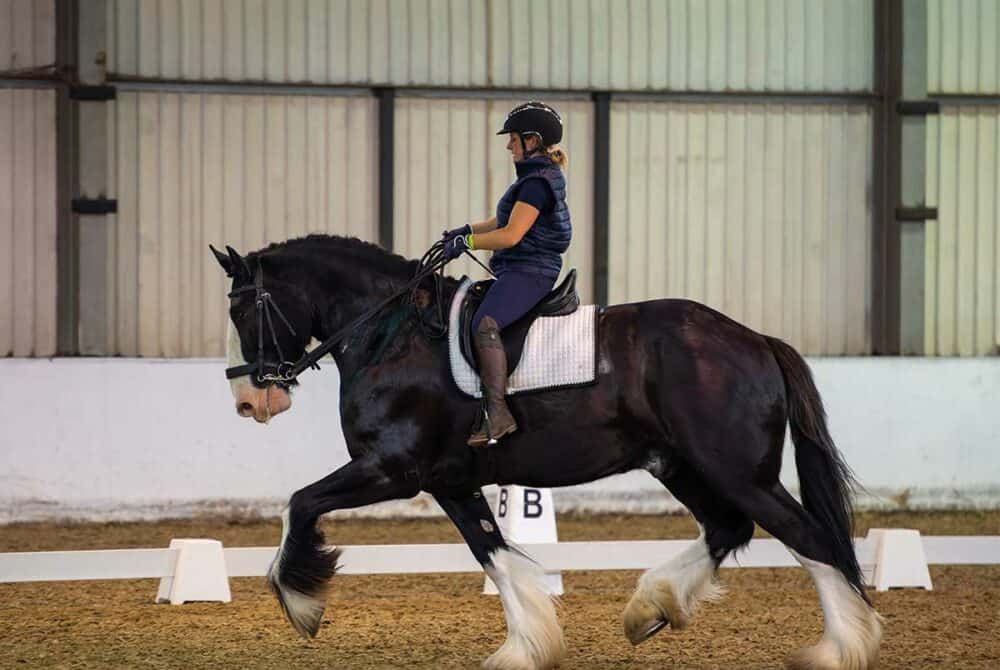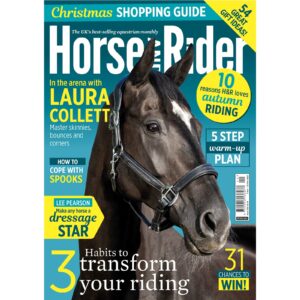Make any horse a dressage star
Posted 28th October 2022
In the third and final part of Sir Lee Pearson’s series, he talks us through training Jupiter, a Shire who’s proven that all breeds and types can excel in dressage

The most important quality for any dressage horse to possess is a good, trainable temperament. So even if your horse isn’t a conventional dressage type, the best starting point is a willingness to learn. Then, regardless of his size or stature, there are qualities you can focus on within his training that will improve his suitability and help him achieve the top marks – namely balance, suppleness and activity.
In this feature I’ll discuss the various exercises I use to help develop these skills. They’re useful for progressing any horse’s training, whether or not he has a natural inclination for dressage. Here’s how you can get started.
Did you know?
Half-halts are a good way to help your horse stay lighter in front. Top riders will make subtle half-halts in their training and in tests, but they might be so refined you won’t even see them.
Lighten up
Every horse will naturally prefer to carry more weight on his shoulders than on his hindlegs, and heavier types tend to be even more inclined to work on the forehand. When this happens, you’ll feel your horse bear down or pull on the reins in an attempt to take the weight off his hindleg and load his shoulder.
If this happens with your horse, try not to get drawn into a battle of strength. It’s not your job to hold him up. Instead, the moment you feel your horse become heavier in the rein, focus on what’s going on behind the saddle rather than in front of it. The quicker you can get his hindlegs working, the more he’ll push from behind to propel himself forward, rather than pulling himself along with his forehand.
To do this, you’ll need to be strong in your core and seat and be quick to use your leg to keep his hindlegs active. Riding transitions within the pace will help with this, from collected trot to medium trot and back again. Through this constant adjustment of balance you’ll soon ride your way to a horse who’s lighter on the forehand.
TOP TIP
Don’t worry too much if your horse falls in when you begin cantering in an arena. Just focus on keeping the canter going until his balance improves.
For more of Lee’s top tips, check out December Horse&Rider – get your copy today!











